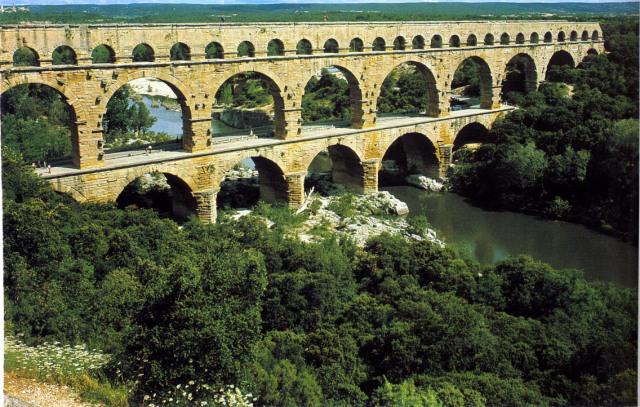Amazing structures are sometimes found on the territory of countries around the world, the construction plan of which is sometimes difficult to understand by their appearance. Such, for example, is the aqueduct. This massive structure resembles a bridge with high arches below. However, this is not the case.
The construction of these structures began long before the advent of a modern water supply system. Even in ancient Rome, in order to deliver water from highly located reservoirs to the fields, to settlements and other necessary places, aqueducts were built. A synonym for this word in its narrower sense is the term "conduit".
An aqueduct is a structure above a road or other obstacle to channeling water through a canal or pipe. As a rule, the material for the construction of this structure is stone, iron or concrete. There was no special mechanism for supplying water: from a reservoir located high, at a natural angle, the liquid drained into the required place.
It should be noted that the irrigation aqueducts of Ancient Rome, and not only of Rome, were open. While their water counterparts were built with ventilation and completely isolated from external influences. Such designs can be found all over the world: in Vienna, Sevastopol, Paris, New York and other megacities and small cities.
The very first are Roman aqueducts. The rapid population growth of the city made the architects of that time bow their heads over the blueprints and develop a construction project that could help provide people with water. All sorts of containers, channels and gateways, interconnected, turned into the world's first water supply. Water in these tanks came from mountain sources located near the city. At the same time, when a road or a ravine met on the path of a rapid stream, a special arched structure was built - an aqueduct. This architectural solution was widespread not only in the empire, but throughout the world.
The most huge structure of this type in Rome was considered the aqueduct named after Claudius. It is easy to guess that it was built in honor of the emperor with the same name. The construction was in the 1st century AD. Rough stones and massive blocks from which the aqueduct was erected gave him power and strength. Thanks to this, many scientists considered the building one of the most amazing structures on earth. The water supply link was located at the intersection of roads, which, as expected, led to Rome. The first is Via Labicana. The second is Via Praenestina. The height of the structure of 27 meters allowed the creation of huge gates, called Porta Maggiore.

On the territory of modern Russia there is also an aqueduct. This building is located in Moscow. The popular name for this miracle of architecture is the Millionth Bridge. Original - Rostokinsky aqueduct. It was once the longest in Russia (356 meters) and was built over 25 years. A colossal amount for those times was spent on this process - more than 1 million rubles, hence the name - Millionnaya bridge. Built on the orders of Catherine II, the aqueduct is currently a pedestrian area - it has been completely restored and crowned with a roof. The building is located in the area of VDNH.